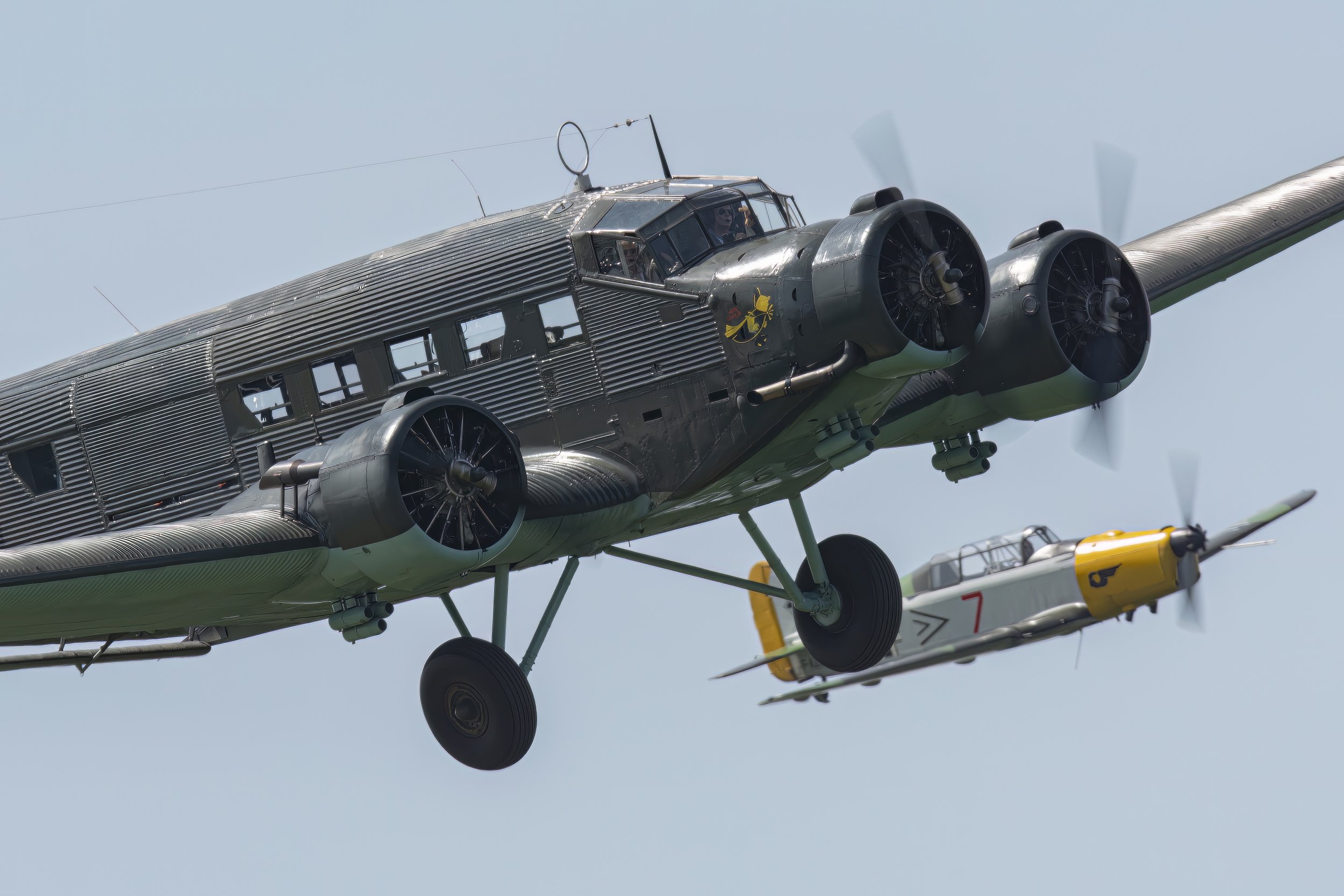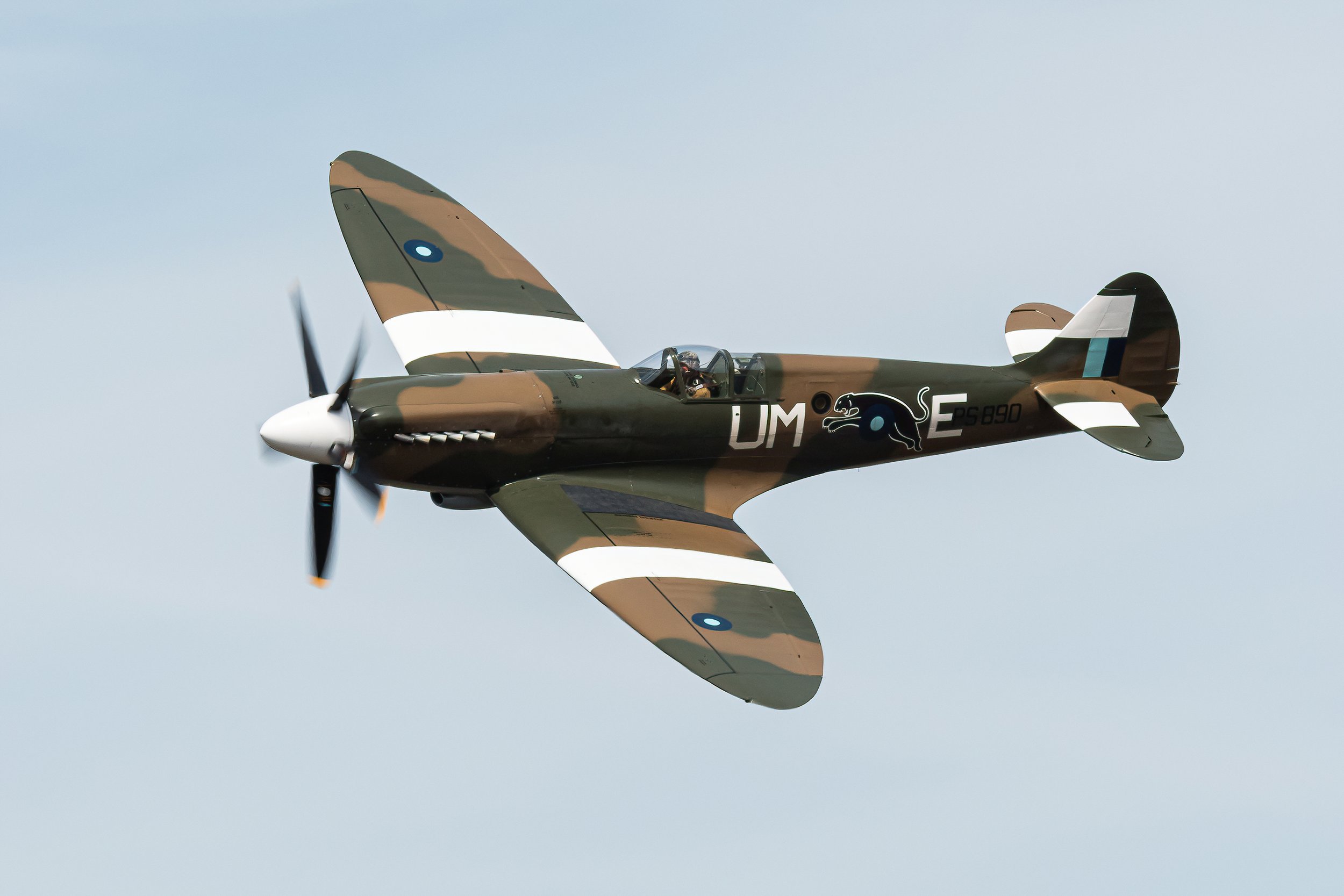DC-3 F-AZOX
Year built
1944
Aircraft
CC-129 Dakota
Base
Caen-Carpiquet Airport
This historically significant aircraft was built in Oklahoma City, USA in 1945. It was given the serial number 44-77020 and delivered to the USAAF on May 24th of the same year. Shortly after, it was transferred to the Royal Air Force (RAF) and assigned as KN655 on June 9th, 1945, marking the commencement of its journey as a 'Dakota IV'.
The aircraft arrived in the United Kingdom on June 15th of the same year and was officially allocated to 512 Squadron, stationed in the Middle East on October 7th, 1945. It was then transferred to 436 Squadron on March 10th, 1946, where it continued to serve with distinction.
In June 1946, the aircraft was transferred to the Royal Canadian Air Force (RCAF) after serving in the British Royal Air Force (RAF) during World War II. The aircraft was assigned the serial number 1000 by the RCAF and used by the 412 Transport Squadron (412(T)) as a VIP transport plane.
The aircraft was given the honor of carrying the Queen on several occasions during her visits to Canada. It was a significant moment for the RCAF as it was the first time a serving monarch had flown on an RCAF aircraft. The aircraft's luxurious interior was refurbished to meet the Queen's standards, making it a comfortable ride for her and her entourage.
After serving its purpose in the RCAF, the aircraft was allocated to VU-32 at CFB Shearwater, Nova Scotia. VU-32 was a training squadron that provided anti-submarine warfare training to pilots. The aircraft's role changed from being a VIP transport to a trainer that helped train and hone the skills of pilots.
In June of 1970, the aircraft underwent a re-serialization process by the CAF, which resulted in the issuance of a new serial number, 12965. The aircraft was also redesigned as a CC.129 during this process. Following this, in 1975, the aircraft was decommissioned from military service and became a civilian aircraft. It was then registered as C-GGJH of Eclipse Consultants, located in Ontario, Canada.
Subsequently, in 1979, the aircraft was re-registered as C-GSCC by Skycraft Air. Further, in August of 1981, Ilford Riverton Airways took ownership of the aircraft. The aircraft was then owned by Northland Air Manitoba from 1986 to 1991.
During the year 1991, the aircraft was exported and transported to France where it was registered under the designation F-GIAZ. A few years later, in May 1994, it was re-registered and given the new designation of F-GIDK. Since May 2010, this historic aircraft has been operating under its current registration of F-AZOX. The Association 'Un Dakota sur la Normandie' is responsible for operating this aircraft, which has a rich history and is considered a valuable testament to the courage and resourcefulness of the pilots who flew it. It serves as a unique symbol of the sacrifices and bravery of those who fought for their country.
| Back to Top |
Douglas DC-3
The Douglas DC-3 was a revolutionary propeller-driven airliner that significantly impacted the airline industry during the 1930s and 1940s, as well as during World War II. It was developed by the Douglas Aircraft Company as an improved version of the Douglas DC-2, with a larger and more comfortable 14-bed sleeper, which helped to set a new standard in air travel.
The aircraft is a low-wing metal monoplane with conventional landing gear, powered by two radial piston engines that produce 1,000-1,200 hp (750-890 kW). Although most DC-3s that are still flying today use Pratt & Whitney R-1830 Twin Wasp engines, many of the planes originally built for civil service were equipped with the Wright R-1820 Cyclone engine. This engine was less powerful than the Twin Wasp, but it was more economical and reliable.
The DC-3 was a notable improvement in many ways compared to previous aircraft. It was faster, more reliable, and had a longer range, providing passengers with greater comfort. Prior to the war, it pioneered many air travel routes and was capable of crossing the continental US from New York to Los Angeles in just 18 hours with only three stops. Additionally, it was one of the first airliners to efficiently carry only passengers without relying on mail subsidies.
During the war, the DC-3 played a vital role as a military transport aircraft. It was used extensively by the United States Army Air Forces (USAAF) and the Royal Air Force (RAF) for a wide range of missions, including paratroop drops, aerial resupply, and medical evacuation. Military versions of the DC-3, including the C-47 Skytrain (known as the Dakota in British RAF service), as well as Soviet- and Japanese-built versions, brought total production to over 16,000.
Following the war, the market was flooded with surplus transport aircraft, and the DC-3 was no longer competitive due to its size and speed. It was replaced on main routes by more advanced types, such as the Douglas DC-4 and Lockheed Constellation, but the design proved to be adaptable and useful on less glamorous routes. Many DC-3s were converted into cargo planes, and some were modified for use as executive transports and aerial survey platforms.
Civil DC-3 production was discontinued in 1942, with a total of 607 aircraft produced. However, the DC-3 continued to serve in a variety of roles in many countries around the world. Even today, many DC-3s continue to fly in a variety of niche roles, with an estimated 2,000 still in operation in 2013 and over 300 still in service as of 2017. The aircraft's durability, versatility, and reliability make it a popular choice for operators who require a dependable workhorse that can operate from short runways in remote locations.
| Back to Top |








| Back to Top |















